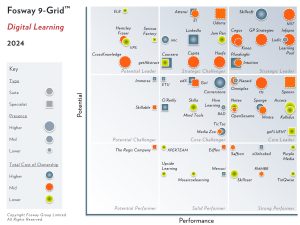Don Taylor’s annual global sentiment survey highlighted that there was an unprecedented agreement that re-skilling and upskilling was the priority focus this year. At Saffron we’ve been looking at the skills agenda for some time.
Whilst there’s been a focus on what skills need to be learned, we’ve always been interested in what L&D can do to develop learners that upskill or re-skill themselves. This will be crucial as workplace trauma and disruption continues.
The answer could be self-determined learning. If you want to see how Saffron have developed and implemented this with various clients, look at our opening seminar at Learning Technologies Digital Experience, which you can see on-demand here – or you can see the summary below.
Why self-determined learning?
Quite simply, the way we work has changed, learners want change and business requires the way that people learn to move from competence to capability.
We need learners that can identify their own problems, find the solutions and build their skills. Learners that achieve a deep understanding enables them to apply their knowledge to all future roadblocks – rather than one specific problem.
The key principles of self-determined learning are below. Select each of the areas to find out more.
Curiosity is what drives a learner, they take the lead in the process and so have the freedom to explore a subject. They seek out answers to a problem they themselves have identified.
Learners need to connect with a course. They need to feel that it’s applicable, personal and relevant to their interest in the subject.
Learners cannot be a passive part of the learning process. They should be active in creating materials, resources and content that help the information stick.
As part of the creation process, learners should have the opportunity to collaborate with colleagues and share their ideas and products. This helps synthesise the learning and apply it to new contexts.
Another fundamentally important stage, reflection leads back into the explore stage. Learners reflect on what they’ve learnt, identifying gaps or what they want to find out about next. It also allows them to think about and understand the process of how they learn.
Self-determined learning is not a one-time event; it’s a continuous cycle. We need to create a culture where learners are placed at the centre of the process, and are able to determine their own goals and paths, so that they progress from receivers of learning into synthesisers.
But does this work in the workplace?
It not only fits in the workplace – but is necessary.
One common question is “But how do we get them to learn what we need them to learn?”. Forcing employees to take a course doesn’t mean they’ve learnt something. We have to make the learning effective, and we do this by really understanding how people learn best. You can still have a course on compliance, but think through how this may be done differently with the practical steps below.
Saffron's five tips
In summary, it’s important not to quash the natural curiosity to learn that we all have as children. Questioning, exploring and evaluating all come naturally – if we don’t spoon feed our learners in what and how they learn!
Join us at our next Learning Technologies Digital Experience seminar on Tuesday 23rd February, where we’ll go through three simple ways to help self-determined learners accelerate their skills acquisition.
We hope to see you there, but if you can’t make it, get in touch and we can explore how best to integrate self-determined learning into your organisation!





